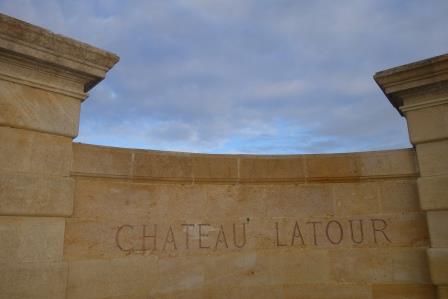2013 Château Latour Grand Vin Pauillac Bordeaux France Wine Tasting Note
22772 Views
|
An intriguing nose of mint, cranberry, currants, cigar wrapper, cedar and tobacco. The wine is medium-bodied, elegant, soft and fresh. The wine finishes with a myriad of piquant red fruits, herbs, olives, a touch of salty rocks and currants. Elegantly styled, this should be ready to go on release. After tasting the wine, we shared it during dinner and while this is clearly not a concentrated wine, it remained in the glass for hours over dinner with any degradation. 5,715 Views Tasted Mar 18, 2021Freshness, elegance and balance are in charge here. The wine is not about power, it's about elegance, grace and balance. Nothing is overdone here. It's a Latour to enjoy in its youth, especially since you'll probably be waiting until 2023, give or take, until it's released. 6,802 Views Tasted May 25, 2016Cassis, plum, mint, fennel and earthy aromas require effort to find. The medium-bodied, ruby-colored wine is soft, polished, delicate and easy to drink. This is a polite style of Latour, with a beautiful purity of fruit that will taste best by 10 years of age. From a blend of 95.3% Cabernet Sauvignon, 4.3% Merlot and .4% Petit Verdot, the wine reached 13.4% ABV. Only 33% of harvest was used to produce the Grand Vin. 92-94 Pts 10,255 Views Tasted Apr 20, 2014 |

When to Drink Chateau Latour, Anticipated Maturity, Decanting Time
Chateau Latour is not a wine to drink on the young side. The wine is usually far too tannic, powerful and reserved during its youth. Young vintages can be decanted for an average of 3-6 hours, give or take. This allows the wine to soften and open its perfume. Older vintages might need very little decanting, just enough to remove the sediment.
Chateau Latour is usually better with at least 15 years of bottle age. Of course, that can vary slightly, depending on the vintage character. Chateau Latour offers its best drinking and should reach peak maturity between 18 and 60 years of age after the vintage.
Serving Chateau Latour with Wine and Food Pairings
Chateau Latour is best served at 15.5 degrees Celsius, 60 degrees Fahrenheit. The cool, almost cellar temperature gives the wine more freshness and lift.
Chateau Latour is best paired with all types of classic meat dishes, veal, pork, beef, lamb, duck, game, roast chicken, roasted, braised and grilled dishes. Chateau Latour is also good when matched with Asian dishes, rich fish courses like tuna, mushrooms and pasta.
In 2011, Chateau Latour added to their holdings in Pauillac when they purchased the 4-hectare vineyard of Chateau La Becasse from the Fonteneau family. The vines are used for the production of Forts de Latour.
Chateau Latour became one of the first major Bordeaux chateaus to embrace anti-counterfeiting measures with the use of the Prooftag system which is in place on the label, bottle and capsule of all future and current releases.
In 2015, Chateau Latour completed renovations which included new offices, tasting rooms and cellars. In fact, Chateau Latour became the first estate in the Medoc to maintain a cellar solely devoted to keeping magnums and other large-format bottling's dating back to 1900. The new cellars were a necessity as they allowed Latour to retain vast stocks of wines, for later releases.
The Pinault family also own other wineries through their holding company the Artemis Group. In Burgundy, they own Domaine d’Eugenie, previously known as Domaine Rene Engel. The vines are located in the Vosne Romanee appellation in the Cote de Nuits. Late 2017, marked another addition to their holdings in Burgundy when they purchased Clos de Tart for a record-setting price of more than 30 Million Euros per hectare!
In the Northern Rhone Valley, they own Chateau Grillet, which prior to their recent sale had been owned by the same family since 1830!
In July 2013, the family added to their list of vineyards with the purchase of Araujo Estate wines, in the Napa Valley. Araujo has since been renamed Eisele Vineyards. The following year, in 2014, The Artemis Group made their first purchase in the Right Bank, when they invested in Chateau Vray Croix de Gay, Pomerol, Chateau Siaurac, which is located in the Lalande de Pomerol appellation and Chateau Le Prieure in St. Emilion. They sold all their Right Bank vineyards, September 2020 to Suravenir Insurance, the owner of Chateau Calon Segur.

